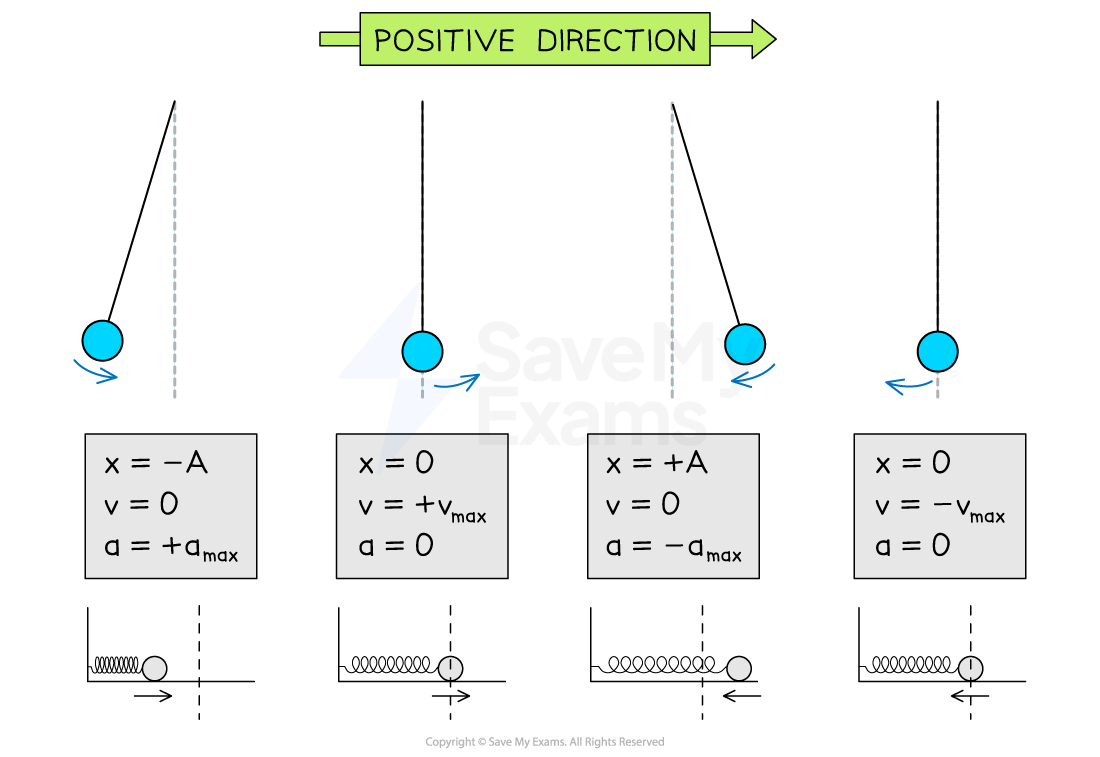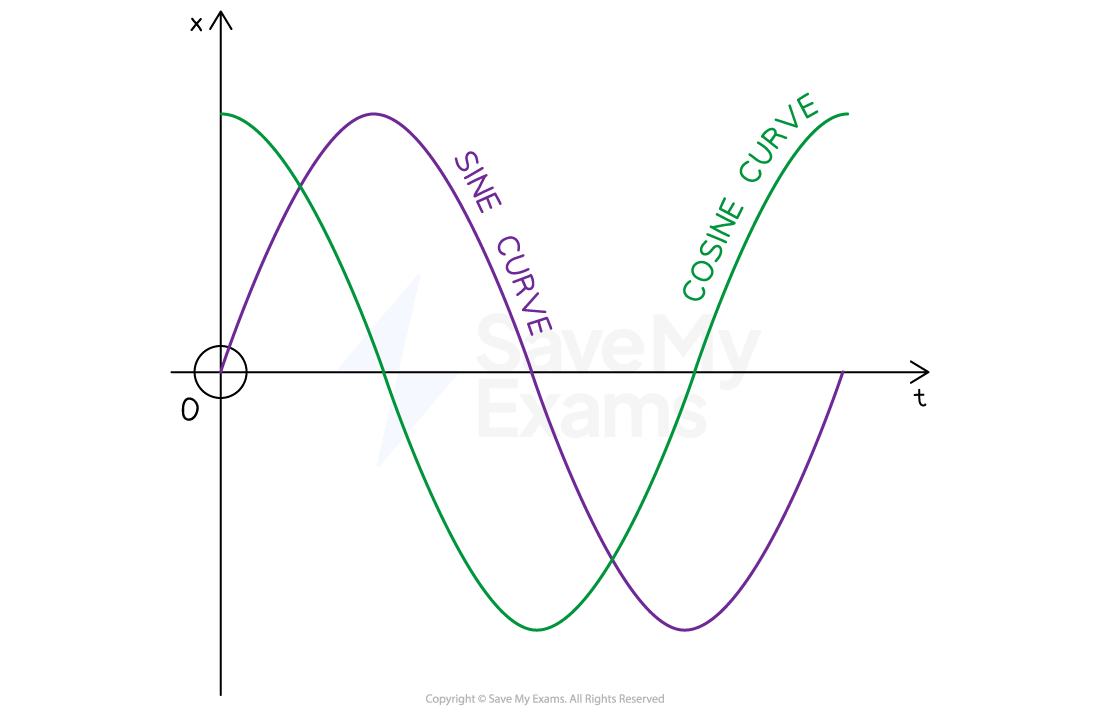Features of SHM (College Board AP® Physics 1: Algebra-Based): Study Guide
Features of SHM
Displacement, velocity and acceleration
The amplitude positions of an oscillating system refer to the furthest points from equilibrium on either side
One side of the equilibrium should be chosen as the positive and the other as the negative
Usually, the left side (or lower side) is negative and the right side (or upper side) positive
As the system in SHM oscillates between amplitude positions, the values of displacement, velocity and acceleration are constantly varying
Each quantity alternates between a (positive) maximum value and a (negative) minimum value throughout a cycle
This means each quantity is zero at some point in the cycle
These minima, maxima and zeroes are characteristic features of SHM
Displacement
At the negative amplitude position:
Displacement has a minimum value of
Here,
is amplitude, the greatest distance from equilibrium position
At the positive amplitude position:
Displacement has a maximum value of
At the equilibrium position:
Displacement has a value of 0
Velocity
At the negative amplitude position:
Velocity has a value of 0
The object is temporarily stationary as it changes direction
At the positive amplitude position:
Velocity has a value of 0
At the equilibrium position:
Velocity has a maximum value of
if the object is travelling in the positive direction
Velocity has a minimum value of
if the object is travelling in the negative direction
Acceleration
At the negative amplitude position:
Acceleration has a maximum value of
Acceleration acts in the opposite direction to displacement, which is a defining feature of SHM
At the positive amplitude position:
Acceleration has a maximum value of
At the equilibrium position:
Acceleration has a value of 0
The restoring force has a value of 0 here
Changing quantities in SHM

Examiner Tips and Tricks
Acceleration has the greatest magnitude at the extremes because this is where the restoring force is strongest. Force and acceleration are directly proportional, following Newton's second law.
Calculating displacement in SHM
Sine and cosine
Displacement in SHM alternates smoothly between maxima and minima over time with a constant frequency
Sinusoidal graphs (sine or cosine) also alternate smoothly between maxima and minima with a constant frequency
In SHM, the variation of position with time can therefore be represented graphically using a sine or a cosine graph
A sine graph begins with its y axis at 0, whereas a cosine graph begins with its y axis at the maximum value
Either graph can represent position against time, it depends on when
is defined
Sine graph and cosine graph

Displacement equations
To calculate the displacement from equilibrium for an object oscillating in SHM, one of the following equations can be used:
Where:
is the object's position relative to the equilibrium position, measured in
is the amplitude of the oscillation, measured in
is the frequency of oscillations, measured in
is the time at which displacement is being calculated, measured in
The cosine equation is used if
is defined when the object's displacement is at a maximum
The sine equation is used if
is defined when the object's displacement is zero
Examiner Tips and Tricks
Pay close attention to the wording of questions where you need to use these equations. You are unlikely to find a sentence telling you 'at a time of zero, the displacement is also zero'.
Statements like 'the mass is pulled 5 cm from equilibrium and then released' or 'the ball is in equilibrium. Oscillations begin when it is struck'. The first sentence tells you to use cosine as oscillations start from the amplitude position, while the second sentence tells you to use sine as oscillations begin from equilibrium.
Additionally, ensure your calculator is in radians mode for this equation, not degrees.

Unlock more, it's free!
Did this page help you?